2020 Kawasaki Concours 14 ABS
Contents
The 2020 Concours 14 ABS is Kawasaki’s entry into the long-range sports touring category. Utilizing a 1352 cc DOHC liquid cooled inline 4, the Concours 14 produces 158 crank HP and 11 lbs-ft of crank torque, which is easily enough to accelerate and cruise at highway or freeway speeds. Unlike many of Kawasaki’s other offerings, the Concours 14 also utilizes a shaft drive instead of a chain to power the rear wheel.
For 2020, the Concours 14 continues the 2018 model generation equipment, with dual throttle valves (standard and ram air), Kawasaki Traction Control, Kawasaki Advanced Coactive Braking (unified braking), KIPASS (proximity key sensing), electronically adjustable windscreen, and a full tire pressure monitoring system. As well, the Concours 14 comes with ABS, and build in hard case saddlebags as standard.
The 2020 Kawasaki 14 ABS starts at $15,599 US/$18,599 CA
On this page: we’ve curated specs, features, news, photos/videos, etc. so you can read up on the new Kawasaki Concours 14 ABS in one place.
Model Overview
General Info
- Price: $15,599 US/$18,599 CA
- Key Features:
- Abs (Anti-lock Brake System)
- Economical Riding Indicator
- LED Lighting
Key Specs
- Engine type: 1352cc, 4-stroke, 4-cylinder
- Power: 158 Hp
- Wet weight: 690 lb
- Seat height: 32.1 in
Key Competitors
2020 Kawasaki Concours 14 ABS Specifications
ENGINE |
||
| Engine | 1352cc, 4-stroke, 4-cylinder, DOHC, 4-valve, liquid-cooled | |
| Power | 158 Hp | |
| Bore x Stroke | 84.0mm x 61.0mm | |
| Compression Ratio |
10.7:1
|
|
| Fuel System | DFI® with 40mm throttle bodies (4) | |
| Starter | Electric | |
| Lubrication | Forced lubrication, wet sump with oil cooler | |
DRIVETRAIN |
||
| Clutch | Wet multi-disc, manual | |
| Transmission | 6-speed | |
| Final Drive | Tetra-Lever shaft drive | |
CHASSIS |
||
| Suspension Front | 43mm inverted, telescopic fork with adjustable rebound damping and spring preload/4.4 in | |
| Suspension Rear | Tetra-Lever with stepless rebound damping adjustment and remote spring preload adjuster/5.4 in | |
| Brakes Front |
Dual floating 310mm petal-style discs with four-piston calipers, ABS
|
|
| Brakes Rear |
Single 270mm petal-style disc, single-piston caliper, ABS
|
|
| Tires Front | 120/70 ZR-17 | |
| Tires Rear | 190/50 ZR-17 | |
| Fuel Tank Capacity | 22 L (5.8 US gal.) | |
| Color |
Metallic Matte Fusion Silver/Metallic Spark Black
|
|
ELECTRICAL |
||
| Ignition | TCBI with digital advance | |
| Spark Plugs | ||
| Headlight | LED | |
| Tail Light | LED | |
DIMENSIONS |
||
| Overall Length | 87.8 in (2,230 mm) | |
| Overall Width | 31.1 in (790 mm) | |
| Overall Height | 52.9 in (1,350 mm) | |
| Wheelbase | 59.8 in (1,520 mm) | |
| Ground Clearance | 4.9 in (125 mm) | |
| Seat Height | 32.1 in (815 mm) | |
| Curb Weight | 690 lbs (312 kg) | |
WARRANTY |
||
| Warranty | 36 Month Limited Warranty | |
| Extension | ||
2020 Kawasaki Concours 14 ABS Features
Dual Throttle Valves
Late-model sport bikes often use large-bore throttle bodies to generate high levels of power. However, with large diameter throttles, when a rider suddenly opens the throttle, the unrestricted torque response can be strong. Dual throttle valve technology was designed to tame engine response while contributing to performance.
On models with dual throttle valves, there are two throttle valves per cylinder: in addition to the main valves, which are physically linked to the throttle grip and controlled by the rider, a second set of valves, opened and closed by the ECU, precisely regulates intake airflow to ensure a natural, linear response. With the air passing through the throttle bodies becoming smoother, combustion efficiency is improved and power is increased.
Economical Riding Indicator
Using high-precision electronic control for engine management, Kawasaki models can achieve a high level of fuel efficiency. However, fuel consumption is greatly affected by throttle use, gear selection, and other elements under the rider’s control. The Economical Riding Indicator is a function that indicates when current riding conditions are consuming a low amount of fuel. The system continuously monitors fuel consumption, regardless of vehicle speed, engine speed, throttle position and other riding conditions. When fuel consumption is low for a given speed (i.e. fuel efficiency is high), an “ECO” mark appears on the instrument panel’s LCD screen. By riding so that the “ECO” mark remains on, fuel consumption can be reduced.
While effective vehicle speed and engine speed may vary by model, paying attention to conditions that cause the “ECO” mark to appear can help riders improve their fuel efficiency – a handy way to increase cruising range. Further, keeping fuel consumption low also helps minimize negative impact on the environment.
Fuel Economy Assistance Mode
Activating the Fuel Economy Assistance Mode switches the ECU to a leaner fuel map in which ignition timing and fuel injection prioritize fuel economy. Rather than engine response or power, this mode favors reduced fuel consumption, aiming to increase fuel economy when riding at a constant speed. When riding in areas where gas stations are scarce, or when cruising across the continent, being able to make the same amount of fuel last longer is a considerable benefit.
Maximizing the effectiveness of the Fuel Economy Assistance Mode requires a gentle use of the throttle. Nevertheless, especially when used in conjunction with the Economical Riding Indicator, this mode can contribute to significant savings in fuel costs over long distances.
KTRC (Kawasaki TRaction Control)
KTRC, Kawasaki’s advanced traction control system provides both enhanced sport riding performance and the peace of mind to negotiate slippery surfaces with confidence. Multiple rider-selectable modes (the number of modes varies by model) offer progressively greater levels of intrusion to suit the riding situation and rider preference.
Less intrusive modes maintain optimum traction during cornering. Designed with sport riding in mind, they facilitate acceleration out of corners by maximizing forward drive from the rear wheel. And because Kawasaki’s sophisticated software bases its dynamic analysis on the chassis’ orientation relative to the track surface (rather than relative to a horizontal plane), it is able to take into account corner camber, gradient, etc., and adapt accordingly.
In the more intrusive modes (and for some models, in any mode), when excessive wheel spin is detected, engine output is reduced to allow grip to be regained, effectively enabling riders to negotiate both short, slippery patches (train tracks or manhole covers) and extended stretches of bad roads (wet pavement, cobblestone, gravel) with confidence.
Models equipped with IMU incorporate chassis-orientation feedback to offer even more precise management.
K-ACT (Kawasaki Advanced Coactive-braking Technology) ABS
At its heart, K-ACT ABS is an advanced anti-lock braking system, designed to keep tires from locking up during braking. But K-ACT ABS was designed to be used on touring models weighing in excess of 300 kg (661 lb) – and that is before adding a passenger and luggage.
Complementing its standard ABS function, K-ACT ABS links the front and rear brakes. It monitors the brake force the rider is exerting at both the front and rear, and takes into consideration vehicle speed to ensure highly effective braking while maintaining chassis stability.
For example, let’s say the rider pulls on the front brake lever. To keep the bike from pitching forward, the ABS ECU actuates the rear brake (via fluid pumps) to ensure that front-rear balance is maintained. Should the rider push the rear brake pedal, the system actuates the front brake as well to distribute the load more evenly so that the rear wheel does not lock up. Based on the vehicle speed, K-ACT decides the optimum hydraulic pressure to send to each caliper, ensuring that even with a heavy motorcycle, stable braking performance is possible.
Accordion Title
With the compact key fob (portable immobilizer) in a pocket, KIPASS allows riders to remotely release the bike’s steering lock and main switch simply by approaching the bike.
When the key fob is close to the bike, the signal it sends out is picked up and recognized by the KIPASS unit in the bike. Like immobilizer keys, each key fob has a unique signal, making this system also useful as a theft deterrent. The key fob can be recognized when in a jacket pocket, so there is no need for the rider to remove the key to operate the bike’s main switch.
*This system uses the encryption algorithm “MISTY” developed by MITSUBISHI ELECTRIC CORPORATION.
Monocoque Frame
Kawasaki’s monocoque frame is a hollow composite of aluminum parts. Originally conceived by Kawasaki engineers, it uses the engine as a fixed member so that chassis rigidity is formed not only by the frame, but the combination of the frame and engine together. Joining the engine and front and rear suspension units, the hollow box-style frame envelops the engine from above. In addition to being made from lightweight materials, its main section also acts as the air cleaner box and battery box, enabling parts to be reduced for even greater weight savings. Further, because the frame does not run beneath or alongside the engine, the chassis can be made very compact. Especially on large-displacement models, the slim chassis design of the aluminum monocoque frame contributes to ease of riding.
The aluminum monocoque frame was originally developed by Kawasaki in the 1980s for their World Grand Prix works racer. In an era where steel pipe frames were the norm, the aluminum monocoque frame that debuted on the KR500 took the world by surprise. First featured on a mass-production model on the 2000 Ninja® ZX™-12R, this original Kawasaki technology has evolved and can be found on some of our large-displacement flagship models.
Tire Pressure Monitoring System (TPMS)
Maintaining the correct tire air pressure is very important as it can greatly affect a motorcycle’s performance. Tire air escapes naturally over time, so it is also important to check tire pressure regularly. The Tire Pressure Monitoring System continuously measures tire pressure (using sensors attached to the air valves of each wheel) and displays the current pressure on the bike’s instrument panel while riding.
Tire air pressure varies greatly as the tires warm up, but the Tire Pressure Monitoring System takes this into consideration and recalculates the pressure for 20°C (68°F) to avoid confusion and false warnings.
2020 Kawasaki Concours 14 ABS Photos
Links
Kawasaki Official Websites


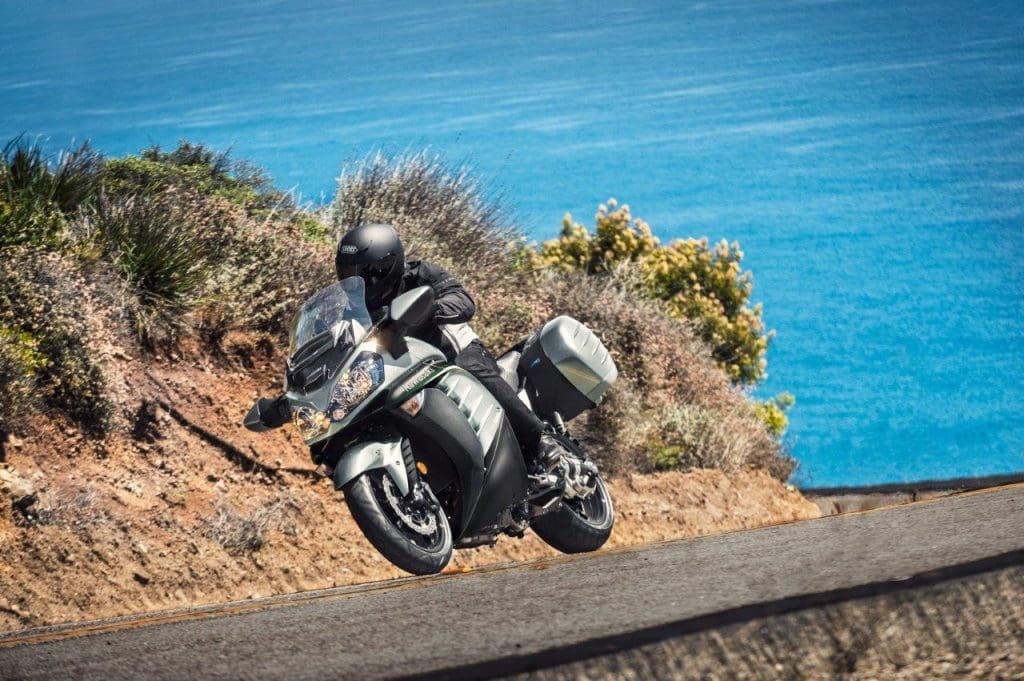
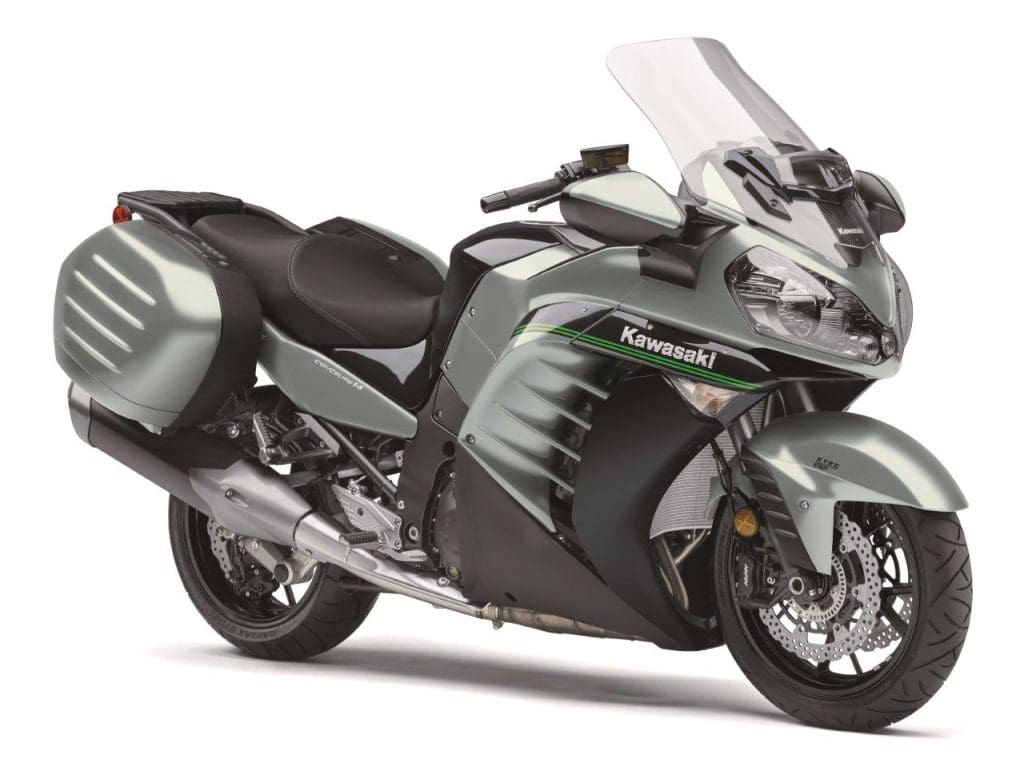
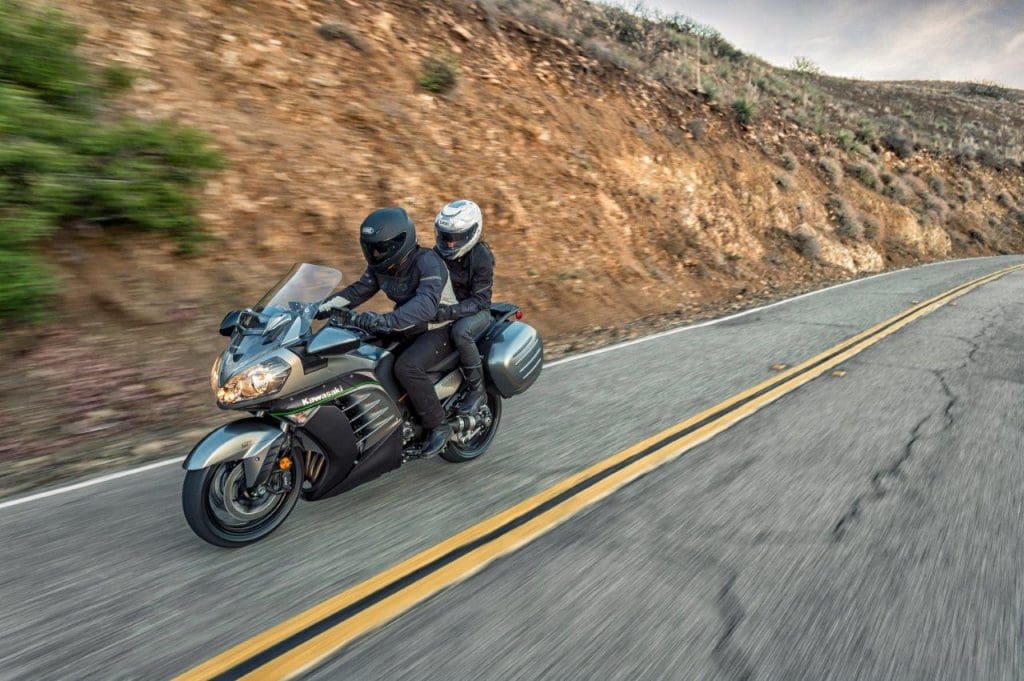
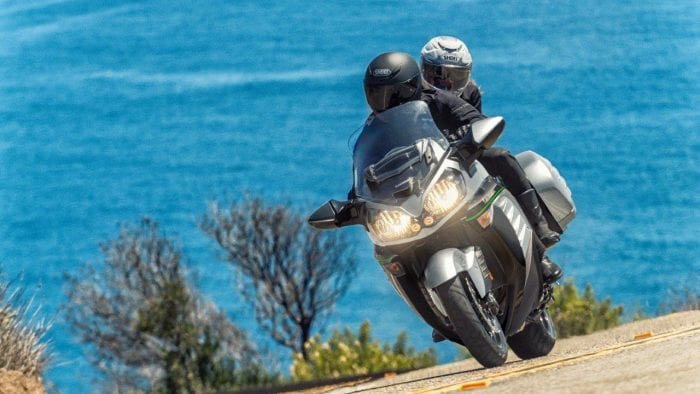
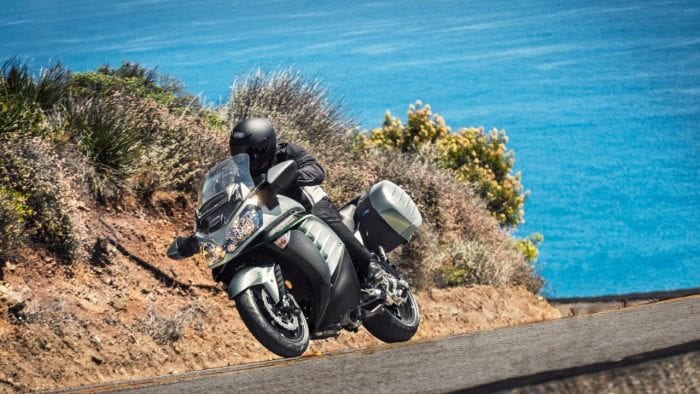
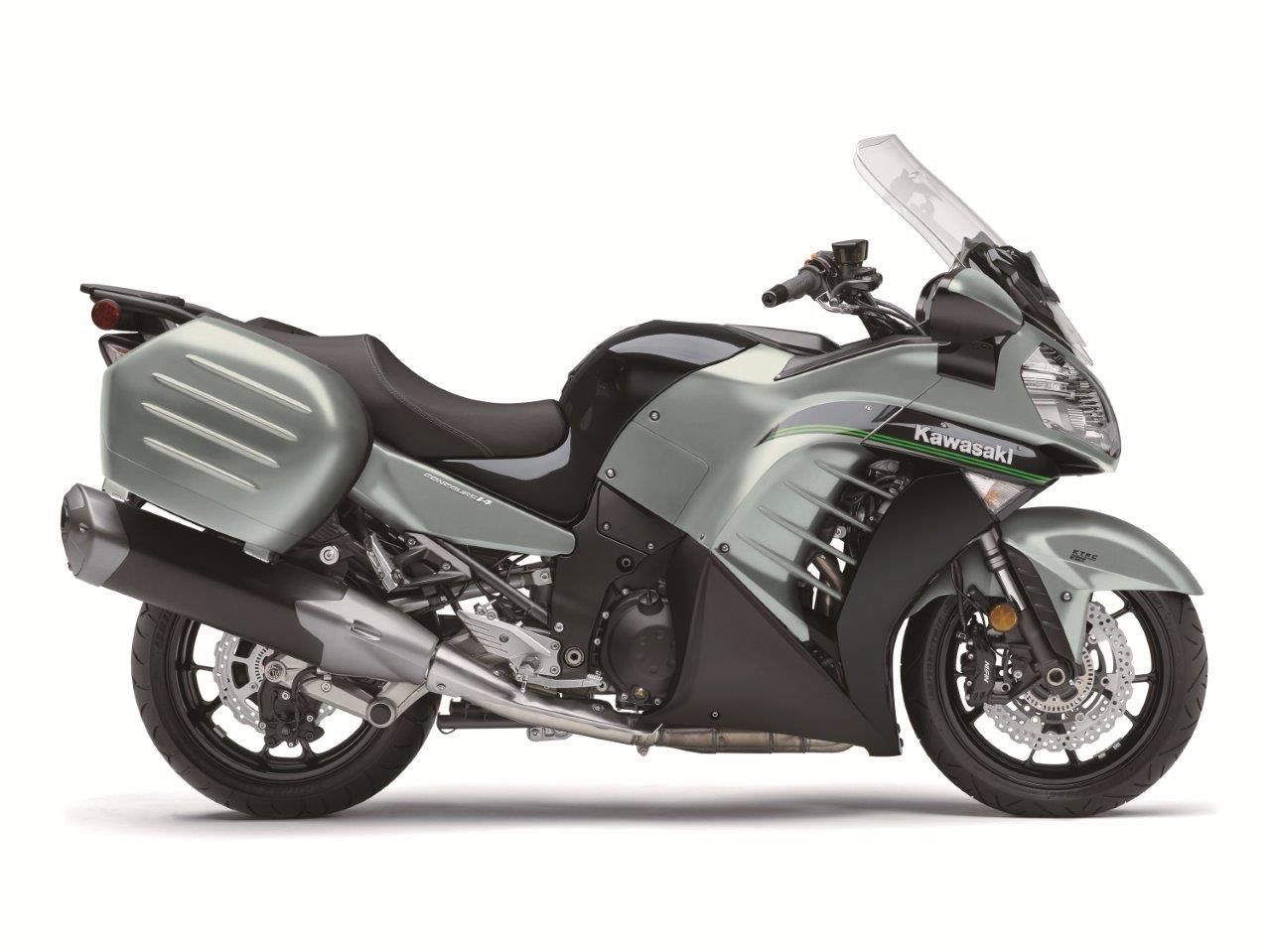
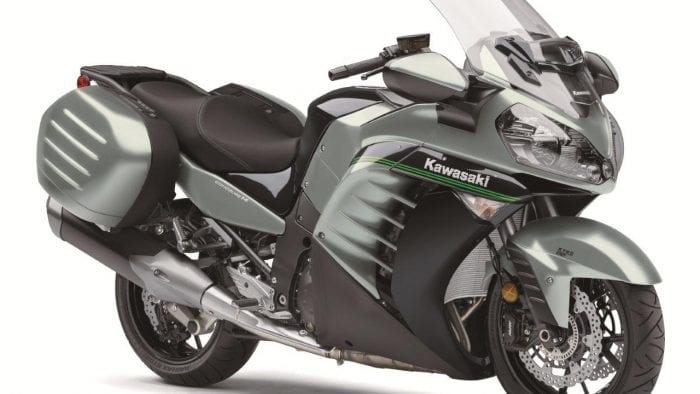
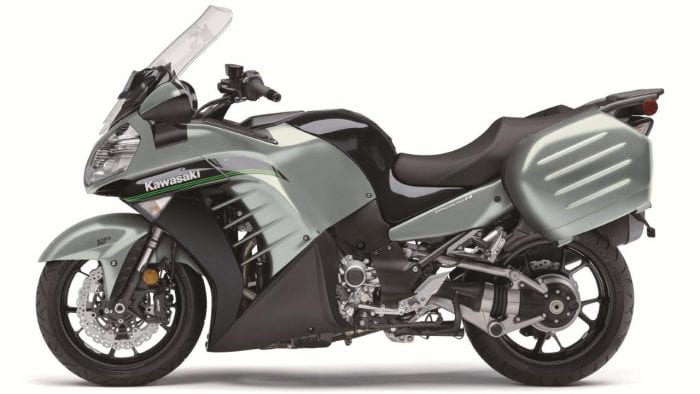
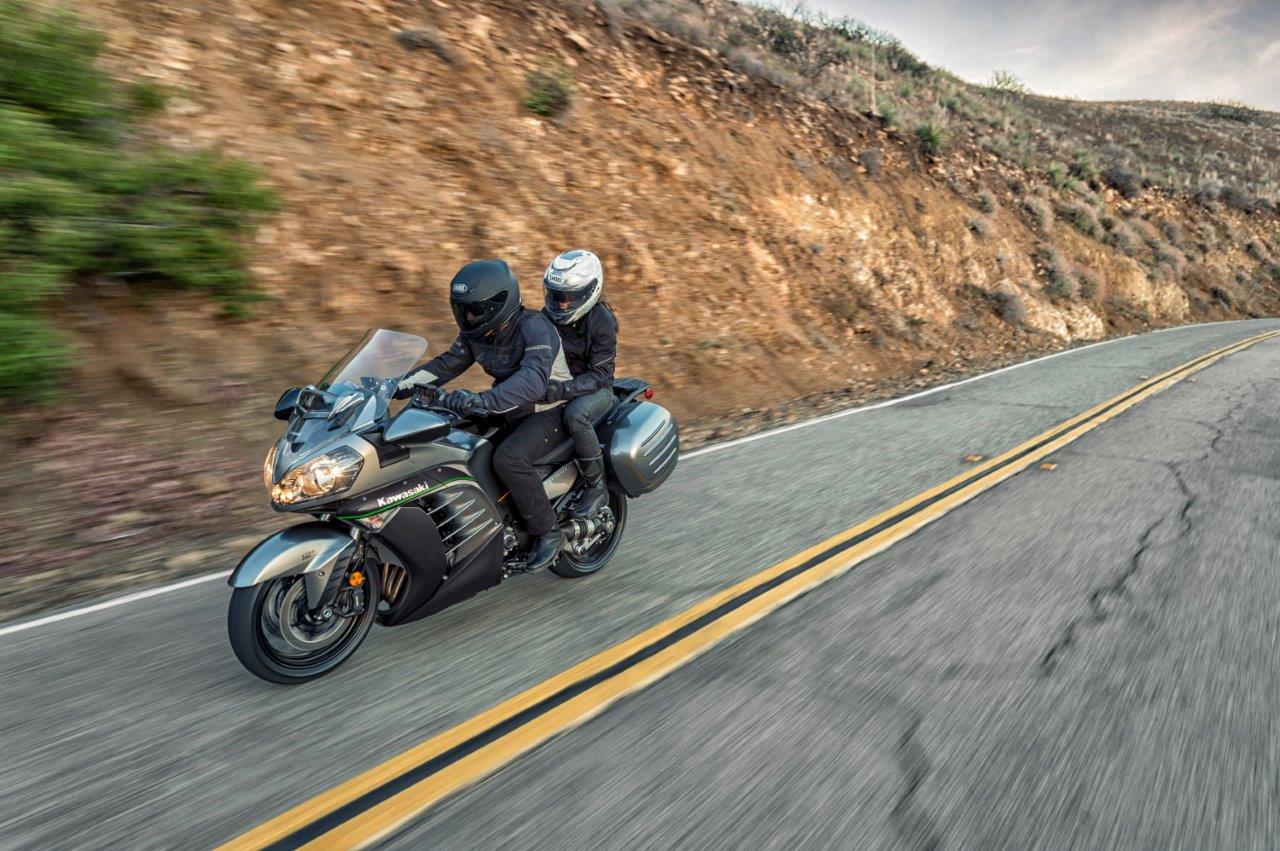

So in other words, once again it really hasn’t changed in years. No cruise control on modern day touring bikes is ridiculous.
Was just taking a quick look. With no cruise control I’m back to shopping FJR’s.
Yes no cruise is the reason I skipped the Concours a couple of years ago and bought the H2SX SE instead. No regrets!
This is a magnificent and sexy bike without CRUISE CONTROL (HELLO KAWASAKI are you guys not listening or just not caring). Thankfully we have a modern Sport Tourer in the 2020 FJR . Maybe in another 5 years they will have Cruise Control.
Passed several times for a bike with cruise control. Makes long rides so much more enjoyable!!!
I own one and I have a throttle lock and I never used it. The Concours is cheaper than any of the sport touring bikes and is there best equipped. Stop worrying about the cruise control. It’s a non factor because of the overall comfort of the bike.
Cruise control on a sport tourer? You guys need to stay with your wings and CB radios
For the love of God, Kawasaki! Put a digital cruise control on it!
Would rather have electronic suspension control.
Got a 2016 model and will not upgrade unless this happens
They can put man on the moon but no cruise on a touring bike. Come on! Get it done already!
Hear, hear!
I think you guys will find the 2020 Versys 1000 has cruise control and is definitely an excellent touring bike.
There’s also the Ninja 1000 SX and Ninja H2SX SE which both have cruise control.
It’s weird they haven’t added it to the Concours yet. I suspect it’s because they’re about to totally revamp it but I would go for the other three bikes over the Concours any day.
While looking at replacing my Versys 650 for a more touring dedicated bike I first considered the Versys 650. I then learned about the Concours 14. I liked the specs except for the fact that it didn’t have cruise control. After learning that a good aftermarket CC system was available for the bike I purchased a pre-owned 2019 Concours 14 with 3,400 miles for $9,400, including a $1,200 aftermarket Corbin trunk. I then ordered the McCruise Cruise Control System for the bike and installed it myself. I works perfectly. I also ditched the stock exhaust for a 4 into 2 de-cat Delkevic SST exhaust system. Even after adding a number of other accessories I still have a bike with everything I always wanted for less than the cost of a new stock model.
Dav, you’re not wrong! The McCruise is a far superior CC system to the Kawaski one. I reviewed it for wBW a couple of years ago for my then KTM 1190 Adventure.
With all the elbow grease and time your Concours is now so much better and for less cash than a fancy new H2SX SE. No argument from me.
I have a councor and good, fast and comfortable and beautiful, and about 4 grand less
Cruise control is a non issue when u accept the fact that no other engine Sounds so stunning when delivering the endless power. For me, nothing compares to beautiful sound of Kawasaki’s big in line 4. I have tried the Fjr and St, but for me there’s no comparison. It will be a sad day when cruise control is a deciding factor. I came to the exact same conclusion when buying my first zx10 moons ago. If u don’t understand, u never will.
I suppose that the next complaint will be about not having radar-adaptive cruise control. While there are times that it’s nice, and even important to be able to shake out the arms, that can be accomplished with a simple, inexpensive throttle lock.
I suppose that cruise may be a good thing to keep you from accidentally getting a speeding ticket when you’re not paying attention. It’s better to pay attention, but it’s easy enough to zone out on long highway drones.